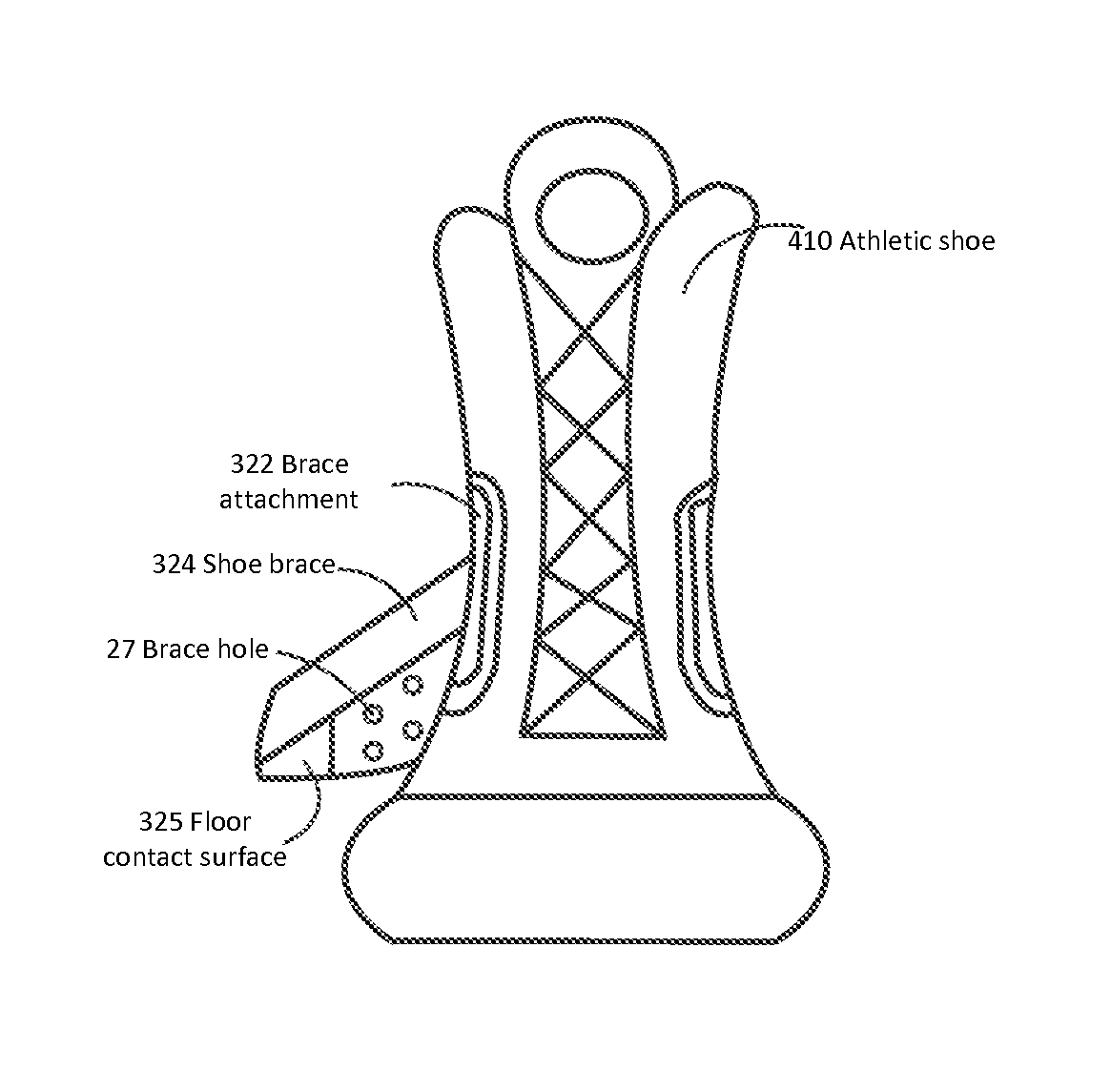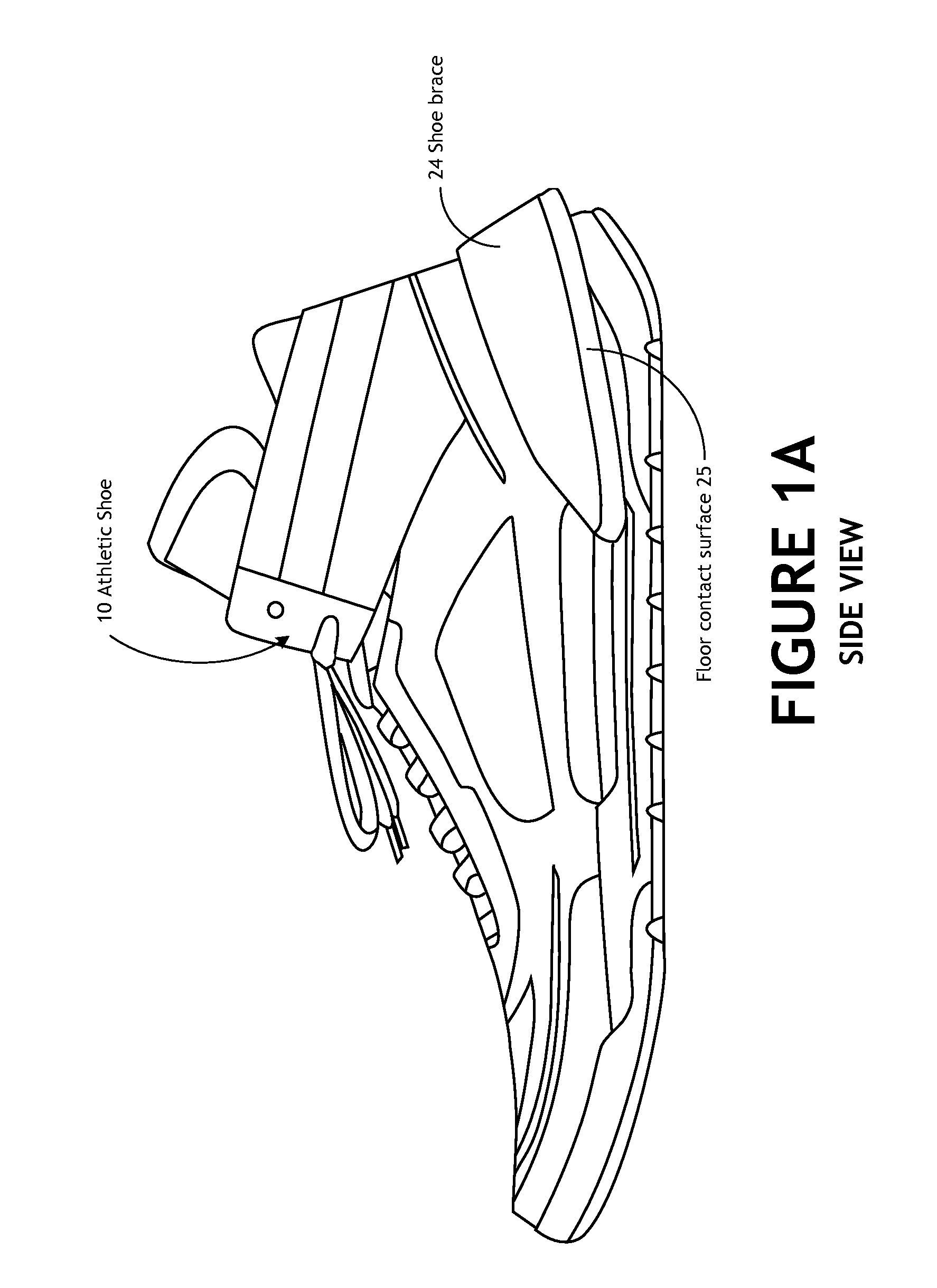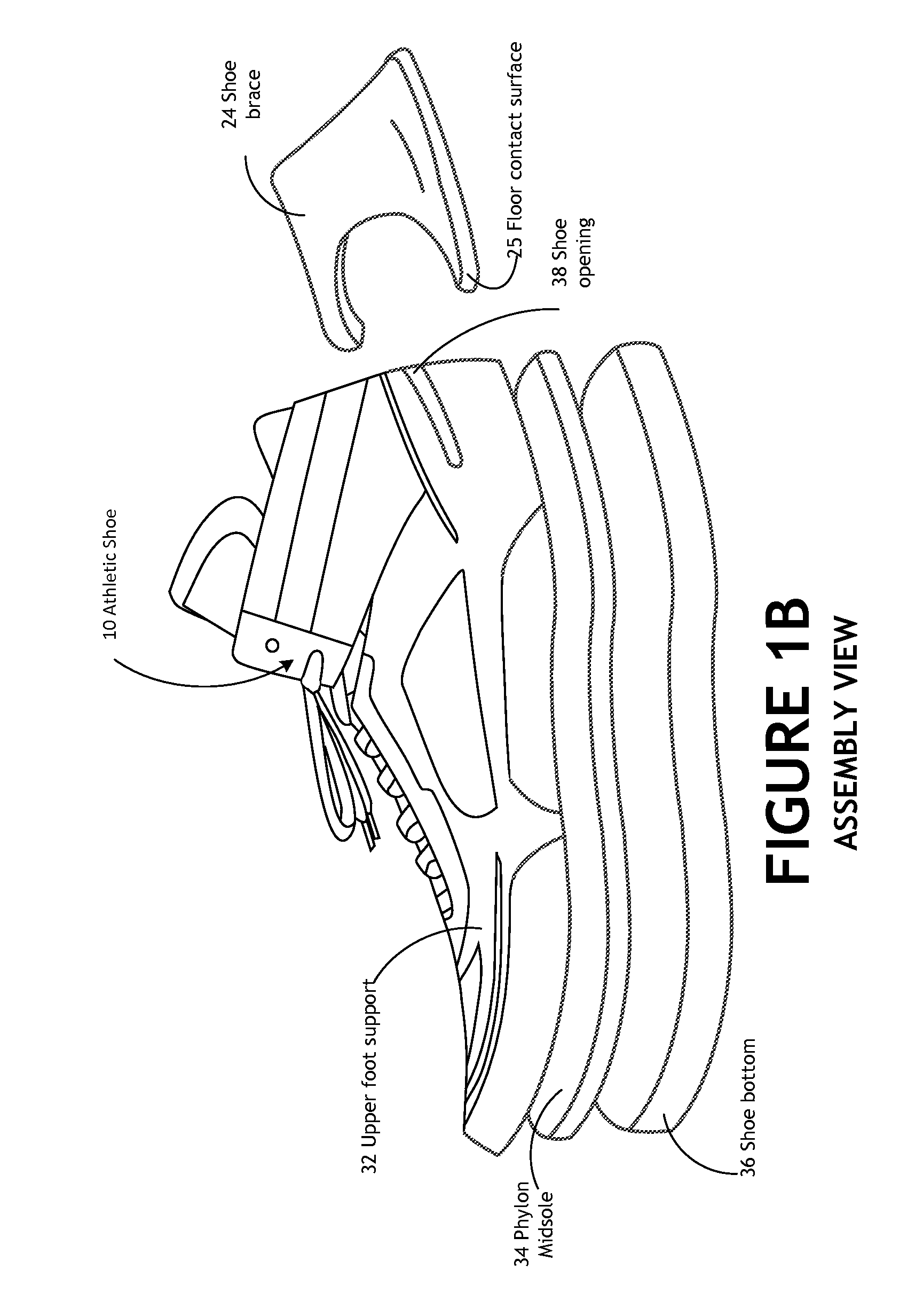Ankle inversion and eversion prevention shoe
a technology for preventing eversion and inversion of ankles, applied in the field of inversion or eversion prevention athletic shoes or devices, can solve the problems of severe stress on the athlete's ankle, injury, and overstretching of the ligament, and achieve the effects of preventing the athlete from spraining, rolling, and minimizing or preventing any ankle injury
- Summary
- Abstract
- Description
- Claims
- Application Information
AI Technical Summary
Benefits of technology
Problems solved by technology
Method used
Image
Examples
Embodiment Construction
[0038]Referring now to the drawings, FIG. 1A depicts the side view of the 1st preferred embodiment of the athletic shoe [10] of the present invention, with a modified ankle inversion and eversion device [40] which is attached rearward and downward toward the heel on the athletic shoe [10]. The heel of the shoe [10] is reinforced with a hard, break resistant material, such as carbon fiber, polyurethane, or hard plastic. The modified ankle inversion and eversion device [40], also has an anti-slip floor contact point [25] which may be made from any friction providing material, such as hard rubber, polyurethane, or other material. This tip is preferably permanently affixed, or in some instances is replaceable.
[0039]FIG. 1B depicts an assembly view of the first preferred embodiment of the ankle inversion and eversion prevention shoe device of the present invention with anti-ankle inversion and eversion device of FIG. 1A. The assembly depicts the upper foot support, the phylite® midsole (...
PUM
 Login to View More
Login to View More Abstract
Description
Claims
Application Information
 Login to View More
Login to View More - R&D
- Intellectual Property
- Life Sciences
- Materials
- Tech Scout
- Unparalleled Data Quality
- Higher Quality Content
- 60% Fewer Hallucinations
Browse by: Latest US Patents, China's latest patents, Technical Efficacy Thesaurus, Application Domain, Technology Topic, Popular Technical Reports.
© 2025 PatSnap. All rights reserved.Legal|Privacy policy|Modern Slavery Act Transparency Statement|Sitemap|About US| Contact US: help@patsnap.com



